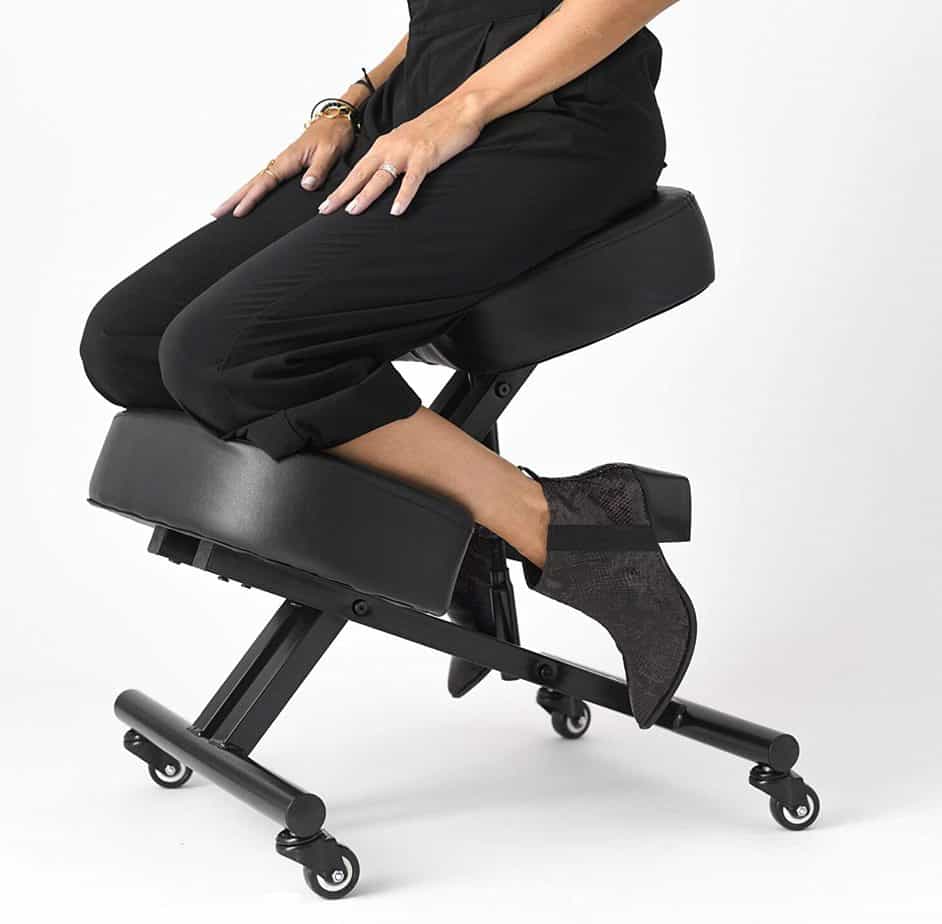Choosing the Right Ergonomic Chair Without a Back: Ergonomic Chair Without Back

Backless chairs, despite lacking a traditional backrest, can still offer ergonomic support and promote good posture. The key lies in selecting the right chair that caters to your individual needs and preferences. This involves considering various factors, such as the chair’s material, adjustability, and size.
Factors to Consider When Choosing a Backless Chair, Ergonomic chair without back
Choosing a backless chair involves several factors that ensure comfort, support, and suitability for your specific needs. The most important aspects to consider are:
- Material: The material of a backless chair plays a significant role in its comfort, durability, and aesthetics. Popular materials include:
- Mesh: Breathable and lightweight, mesh offers good airflow and prevents overheating. It’s typically used in chairs designed for active sitting.
- Leather: Durable and luxurious, leather is often associated with high-end chairs. It’s easy to clean and adds a touch of elegance to any space.
- Fabric: Fabric chairs offer a wide range of colors and textures, making them versatile for different styles. They’re generally soft and comfortable, but they may not be as durable as other materials.
- Plastic: Lightweight and affordable, plastic chairs are often used in casual settings. They’re easy to clean and maintain, but they may not be as comfortable as other materials.
- Adjustability: Adjustability allows you to personalize your chair for optimal comfort and support. Look for features like:
- Height adjustment: Allows you to adjust the chair’s height to match your desk or table.
- Seat depth adjustment: Enables you to customize the chair’s depth to ensure proper legroom and support.
- Backrest tilt adjustment: While not directly applicable to backless chairs, some models might have a slight backrest tilt that can provide additional support.
- Size: The size of the chair should be appropriate for your body type. Consider:
- Seat width: Ensure enough width for comfortable seating without feeling cramped.
- Seat depth: Choose a depth that allows your thighs to be fully supported without pressure on the back of your knees.
- Overall height: Ensure the chair’s overall height is compatible with your desk or table for proper posture.
Types of Backless Chairs
Different types of backless chairs cater to specific needs and preferences. Here’s a table highlighting key features, price ranges, and target users for some popular types:
| Type | Features | Price Range | Target Users |
|---|---|---|---|
| Kneeling Chair | Promotes an upright posture by tilting the pelvis forward. Offers good support for the lower back and thighs. | $100 – $300 | Individuals seeking ergonomic support and improved posture. Suitable for those who spend long hours sitting. |
| Balance Ball Chair | Encourages core engagement and promotes dynamic sitting. Improves balance and coordination. | $50 – $150 | Individuals looking for an active and engaging sitting experience. Suitable for those who want to improve their core strength and balance. |
| Saddle Chair | Promotes an upright posture and reduces pressure on the lower back. Offers good support for the thighs and hips. | $150 – $500 | Individuals who experience back pain or discomfort from traditional chairs. Suitable for those who want to improve their posture and reduce pressure on the spine. |
| Disc Chair | Provides a flexible and supportive seating experience. Offers good support for the lower back and hips. | $50 – $150 | Individuals who prefer a comfortable and flexible seating option. Suitable for those who spend long hours sitting or want to encourage movement. |
Ergonomic chair without back – While ergonomic chairs without backs might seem counterintuitive, they offer a unique approach to posture and support. These chairs encourage active sitting, promoting core engagement and flexibility. The concept of supporting the body without a backrest echoes the design philosophy behind the x back armchair , a piece known for its elegant, open frame.
Both these design choices prioritize a dynamic interaction with the chair, challenging the traditional notion of static support.
While an ergonomic chair without a back might seem counterintuitive, it encourages active sitting and promotes core strength. For those seeking a more traditional approach, a mid back leather office chair can provide both comfort and style. Ultimately, the best choice depends on individual preferences and needs, and both options offer unique benefits for a healthy and productive workday.